July 28, 2011 Multiculturalism Not Dead! Movies Reviewed: Snow Flower and the Secret Fan, Rocksteady: the Roots of Reggae
Hi, this is Daniel Garber at the Movies, for culturalmining.com and CIUT 89.5 FM, looking at high-brow and low-brow movies, indie, cult, foreign, festival, genre and mainstream movies, helping you see movies with good taste, and movies that taste good, and what the difference is.
 Last week — when the biggest worry seemed to be how hot the weather is, where to go for summer vacation, or how to fill one’s time without school – came a piece of news out of Europe shattering the calm and quiet. Someone had set off a car bomb outside government buildings on the ordinarily peaceful streets of Oslo, Norway. And, as the story developed, there was someone shooting people – kids! – at a summer camp nearby.
Last week — when the biggest worry seemed to be how hot the weather is, where to go for summer vacation, or how to fill one’s time without school – came a piece of news out of Europe shattering the calm and quiet. Someone had set off a car bomb outside government buildings on the ordinarily peaceful streets of Oslo, Norway. And, as the story developed, there was someone shooting people – kids! – at a summer camp nearby.
Who could it be? The usual suspects? Must be those “Islamists”! the newswires were saying. Immigrants were angry about being deported, online sites said. Or it must be because of those political cartoons: Denmark and Norway are both Scandinavian, after all. But why were they bombing buildings of the current left-of-centre government? And why had the chosen a summer camp for the same youth wing of the very same party?
 It turns out, it wasn’t Al Qaeda after all. It wasn’t a home-grown muslim sleeper cell. It wasn’t an eco-terrorist, or a black bloc anarchist.
It turns out, it wasn’t Al Qaeda after all. It wasn’t a home-grown muslim sleeper cell. It wasn’t an eco-terrorist, or a black bloc anarchist.
It’s a self-described conservative Christian Norwegian man who is trying to foment a right-wing revolution across Europe. Shocking! And what is his enemy, what is it he’s fighting against? Listen closely, Canadians, because this is for us: The ideology he says he fighting is…
Multiculturalism.
WHAT?
He chooses the most innocuous of all things Canadian as his bete noir? That’s like saying he’s setting off bombs because he doesn’t like poutine, or butter tarts, or Hockey Night in Canada, or
like poutine, or butter tarts, or Hockey Night in Canada, or  dragon boat races or double-doubles, or smoked meat, or two-fours. He’s murdering children to protest against puppies, or mittens, or Banff, or the smell of coriander.
dragon boat races or double-doubles, or smoked meat, or two-fours. He’s murdering children to protest against puppies, or mittens, or Banff, or the smell of coriander.
He claims multiculturalism is to blame for all the world’s problems. I strongly disagree: it’s what makes Canada a great country.
So, this week — in part to protest against right-wing villains like Anders Behring Breivik and their xenophobic hatred and fear of all things different or foreign — I’m looking at a couple movies about important aspects of Canada’s diverse culture: a drama about Chinese women, and a documentary about Jamaican music.
 Snow Flower and the Secret Fan
Snow Flower and the Secret Fan
Dir: Wayne Wang
Snow Flower (Gianna Jun) is a young girl in 19th century Hunan, China whose mother binds her feet in order to marry her out to a good husband. You can hear the bones of her toes breaking, one by one. Tiny feet were the only path to class mobility, for a poor girl. And her feet make her suitable for a rich husband. But she’s surprised when her matchmaker also sets her up with a young woman as her Laotong – her BFF in modern language. She signs a contract and is more-or-less married to her as well, as a lifelong friend and confidant.
She and Lily (Li Bingbing) learn a secret language written in a Chinese script called “Nvshu” or women’s writing. Even after they are married – poor Lily weds a rich but loveless foot-fetishist, the formerly wealthy Snow Flower meets a boorish butcher – they continue to communicate via secret messages written in poetry on folding fans.
Flashforward to present day, sophisticated Shanghai. Now Lily’s descendent, Nina, lies in a coma after an accident, and her modern day laotong, Sophia, wants to find out what happened to her, and why they were no longer the best friends they were as teenagers.
The movie cuts back and forth between the parallel stories, as women’s past and present-day lives (played by the same two actresses) and status are compared. Nina’s fan-messages, that were saved over the centuries, provide Sophia the clues as to what really happened back then, and possibly what was happening between the two friends now.
The acting was good, and I thought the movie was pretty interesting and told me a lot that I wouldn’t otherwise know. But it was also sort of messy and confusing and meandering. The weaker, modern day scenes were less interesting than the hostrical ones, except for the scenes with the always entertaining Vivian Wu as a tragic Shanghai Auntie.
While not perfect, Snow Flower and the Secret Fan is a very rare thing: a Hollywood-style movie, with an all-Asian cast (from China and Korea), in Chinese, about a relationship between two women.
Now another movie about an important part of Canadian culture.
 Rocksteady: The Roots of Reggae
Rocksteady: The Roots of Reggae
Dir: Stascha Bader
What is rocksteady music? Where did it come from? And what does it mean?
Rocksteady is ska… slowed down; it comes Jamaica, from an island of 2 1/2 million people that has recorded over 300,000 songs; and there’s a movie that explains it all for you.
The movie documents the big Rocksteady reunion that took place recently in Kingston, Jamaica when all the legendary musicians, many of whom hadn’t seen each other in 4 decades, got together to recreate the sixties sound. Sly Dunbar, Rita Marley, Leroy Sibbles, the Tamlins, U-Roy, Marcia Griffiths all talk to the camera and perform their music in studio.
This movie gives brief biographies of all the men and women in the rocksteady movement in Jamaica in the 60’s. Better than that is the rerecording of all the great songs from that era that every Canadian would recognize, songs like The Tide is High, You Don’t Love Me, No No No, By the Rivers of Babylon, and others.
Jamaica in the 60’s. Better than that is the rerecording of all the great songs from that era that every Canadian would recognize, songs like The Tide is High, You Don’t Love Me, No No No, By the Rivers of Babylon, and others.
What’s really interesting about the movie is the way the musicians explain the meanings of the songs, their contexts. I grew up hearing a lot of these songs — especially the soundtracks of The Harder They Come, and Rockers – liking the music without knowing what they were singing about. This documentary lets the songs original musicians explain what they meant.
 For example, when Jamaica got its independence from Britain in 1962, it started to boom, with lots of construction, investment and industry in Kingston. But along with the economic boom there was a big influx of people from small towns into the capital, and not everyone got jobs. So some of the young men, jobless in the shantytowns and cut off from their families, became rude boys – the gangsters that terrorized the rest of Kingston. Hence Desmond Decker’s song Shanty Town.
For example, when Jamaica got its independence from Britain in 1962, it started to boom, with lots of construction, investment and industry in Kingston. But along with the economic boom there was a big influx of people from small towns into the capital, and not everyone got jobs. So some of the young men, jobless in the shantytowns and cut off from their families, became rude boys – the gangsters that terrorized the rest of Kingston. Hence Desmond Decker’s song Shanty Town.
And the people pouring into the city by train looking for jobs? Stop That Train….
Historical scenes are illustrated by black and white newspaper photos, record covers, and film and TV clips from the period, accompanied by new recordings by the original artists. Rocksteady is an enjoyable, nostalgic look at the golden age of reggae music in Jamaica.
accompanied by new recordings by the original artists. Rocksteady is an enjoyable, nostalgic look at the golden age of reggae music in Jamaica.
Snow Flower and the Secret Fan is playing now, and Rocksteady is playing for free as part of this weekend’s Irie Music Festival. It’s playing under the stars on Sunday, July 31st at 9:30 p.m. There are also sound stages set up for concerts at Queens Park and Dundas square. For more information look at http://www.iriemusicfestival.com
This is Daniel Garber at the Movies for CIUT 89.5 FM, and on my web site, Cultural Mining . com.
July 15, 2011. Things Fall Apart. Movies Reviewed: Horrible Bosses, Page One: A Year Inside the New York Times, Hospitalité
Hi, this is Daniel Garber at the Movies, for culturalmining.com and CIUT 89.5 FM, looking at high-brow and low-brow movies, indie, cult, foreign, festival, genre and mainstream movies, helping you see movies with good taste, and movies that taste good, and what the difference is.
Movies sometimes seem like an undifferentiated mass of formless entertainment flickering on a big screen, each movie like the one you saw last week, and all of them disconnected from daily life, from the real world. Bit it’s worth it to take a step back and view films like an alien might from outer space, or someone ten years in the future who just came back in a time machine. Because, with a bit of distance, you start to notice themes and trends from one movie to the next.
Right now, at the back of everyone’s minds, is the economic meltdown, the unraveling of businesses and workplaces, the lack of job security, and the fear of unanticipated change. So this week I’m looking at three movies — a comedy, a documentary, and a comic drama — about workplaces facing crises and that may be on the verge of falling apart.
Dir: Seth Gordon
Three friends, Nick, Dale and Kurt, all hate their bosses. Squeaky voiced Dale (Charlie Day) is a dental hygenist who’s sexually harassed by his nymphomaniacal dentist boss, who wants to have sex with him over the sedated bodies of her patients. Nick (Jason Bateman) works in sales at a big company, and has to kiss ass to get his sadistic boss to give him the vice president position. And Kurt’s (Jason Sudeikas) nemesis is the boss’s son, who’s trying to run the business into the ground so he can skim off the profits to pay for his coke habit.
So, at a point of desperation, the three of them come up with a twisted plan to kill each other’s bosses – hilarity ensues. Well, not exactly.
It’s a bit funny, but not that funny. It’s not slapstick, nor screwball, nor sketch comedy – some combination of all three. The script is condescending: typically, it tells a funny joke, but then explains it, so the people who don’t get the joke the first time can laugh too. What’s really weird abut this movie is that Dale, Kurt and Nick are played by TV comedy actors, the bosses and side parts are played by more famous movie stars like Kevin Spacey, Jamie Foxx, and Colin Farrell. It sort of works but sort of seems wrong, like a movie disconnect. Jason Bateman is OK but his part isn’t that funny, and Jason Sudeikas comes across as a low-rent Will Farrell. Aside from a very funny scene involving cocaine, only Jennifer Anniston as the slutty dentist and Charlie Day get the comedy just right. I wouldn’t call this a horrible movie, but it’s not a boss pic either…
famous movie stars like Kevin Spacey, Jamie Foxx, and Colin Farrell. It sort of works but sort of seems wrong, like a movie disconnect. Jason Bateman is OK but his part isn’t that funny, and Jason Sudeikas comes across as a low-rent Will Farrell. Aside from a very funny scene involving cocaine, only Jennifer Anniston as the slutty dentist and Charlie Day get the comedy just right. I wouldn’t call this a horrible movie, but it’s not a boss pic either…
Meanwhile, another business is going through huge changes, and a new documentary looks at what’s happening to it.
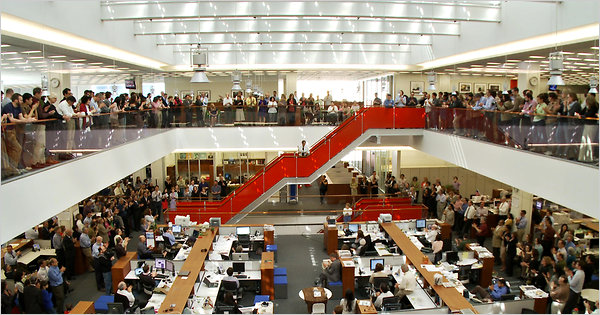 Page One: A Year Inside the New York Times
Page One: A Year Inside the New York Times
Dir: Andrew Rossi
So the NY Times is at a point of crisis. With the economic meltdown, circulation didn’t drop, but advertising did – by some 30%. Newspapers, some more than a hundred years old, are folding across the US. Some people say that print is dead, and the movie begins with a haunting image of copies of the Times just hanging there, upside down, in the printing queue like so many slaughtered and plucked chickens in an abbatoir.
And it faces more problems. Judith Miller and other Times journalists served as government lap poodles printing dubious articles on Saddam Hussein’s mythical Weapons of Mass Destruction, which were later quoted by Bush’s government as justification for their invasion. After all, the Times printed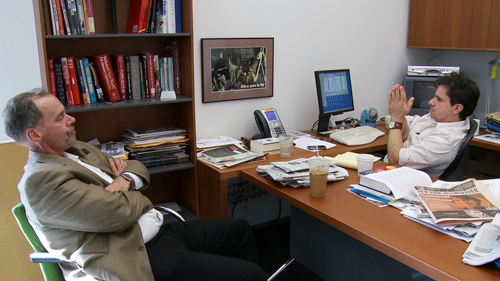 it – it must be true. (Miller is asked on TV whether she’s a journalist or a stenographer.) And online sources like Wikileaks and Gawker are usurping the first stage in the news cycle which used to be the undisputed domain of the press, especially the front page of the New York Times. And many people get their news from aggregate sites like Huffington Post that poach stories from the real journalists who write them.
it – it must be true. (Miller is asked on TV whether she’s a journalist or a stenographer.) And online sources like Wikileaks and Gawker are usurping the first stage in the news cycle which used to be the undisputed domain of the press, especially the front page of the New York Times. And many people get their news from aggregate sites like Huffington Post that poach stories from the real journalists who write them.
This is a very interesting, well-made documentary. It humanizes something as mammoth as the NY Times by concentrating on its reporters, editors, and columnists, especially the very fascinating and entertaining former crackhead David Carr, an opinionated and witty, dedicated champion of the newspaper, who curses like a sailor but puts the dot-com weenies in their place.
Meanwhile, in another part of the world at another printing press, is this new movie out of Japan called
Dir: Koji Fukuda
Kobayashi, his beautiful wife Natsuki, and their little daughter live a placid existence above the tiny printing company started by his late father. Their home is in Shitamachi, the old part of Tokyo where their biggest worry is finding an escaped parakeet, and fending off the local NIMBY club, neighbourhood watch made of local gossips who warn about dangerous people like the homeless, and the dreaded gaikokujin – foreigners.
But suddenly their lives are turned upside down by the arrival of Kagawa, an old school friend. Kagawa starts fixing up the printing machines, and moves into their house. But soon, all the family secrets start come to light and the skeletons fall out of the dusty closets. Who’s that sketchy man Natsuki was seen with? Whatever happened to Kobayashi’s ex-girlfriend? And how did such an plain man marry such a pretty woman?
When Kagawa’s wife, a sexually- charged, blond dance instructor from Brazil – or possibly Bosnia – arrives too, the norms of the house are turned upside down, culminating with some more unexpected guests and a surprising birthday party. Hospitalite is a good comic family drama about the very real shifts in everyday life in contemporary Japan.
the house are turned upside down, culminating with some more unexpected guests and a surprising birthday party. Hospitalite is a good comic family drama about the very real shifts in everyday life in contemporary Japan.
Horrible Bosses and Page One are playing now, and Hospitalite is playing once only at the Japanese Canadian Cultural Centre, next Thursday as part of the Shinsedai Film Festival – look online at Shinsedai-toronto.com. Also opening today at the Royal is Blank City — a great documentary about No Wave cinema that captures that short, explosive period of wide-open but underground filmmaking in 1980’s NY City: check your local listings.
This is Daniel Garber at the Movies for CIUT 89.5 FM, and on my web site, Cultural Mining . com.
July 8, 2011. Films Without Superheroes. Movies Reviewed: The Tree of Life, Blank City PLUS Shinsedai, Toronto After Dark, HotDocs
Hi, this is Daniel Garber at the Movies, for culturalmining.com and CIUT 89.5 FM, looking at high-brow and low-brow movies, indie, cult, foreign, festival, genre and mainstream movies, helping you see movies with good taste, and movies that taste good, and what the difference is.
 Some people wonder, aren’t there any movies that aren’t about cartoon characters, superheroes, guns or toys? What are adults supposed to watch in the summertime? Well, don’t worry, there are films out there for everyone’s taste. This week, I’m looking at two examples of films that exist outside, or alongside, the summer blockbusters. One is an unconventional movie that some people like and some people hate; and another is an up-coming documentary about the no-wave film movement in the post-punk era of downtown New York City in the 80’s.
Some people wonder, aren’t there any movies that aren’t about cartoon characters, superheroes, guns or toys? What are adults supposed to watch in the summertime? Well, don’t worry, there are films out there for everyone’s taste. This week, I’m looking at two examples of films that exist outside, or alongside, the summer blockbusters. One is an unconventional movie that some people like and some people hate; and another is an up-coming documentary about the no-wave film movement in the post-punk era of downtown New York City in the 80’s.
But first… some news about the movie scene in Toronto.
 Art films are great, but genre films are fun too. And there’s a small but amazingly entertaining film festival in the fall that shows genre movies: Horror, Supernatural, Sci-Fi, Fantasy, Animation, Crime, Action, Thriller, Suspense, Cult, and Bizarre. Well, if you are (or know of) a filmmaker who has made a genre film — the kinds of moviesI just mentioned – The Toronto After Dark film festival is open for submissions, worldwide. But better send it fast: the deadline is July 22. For more information go to torontoafterdark.com
Art films are great, but genre films are fun too. And there’s a small but amazingly entertaining film festival in the fall that shows genre movies: Horror, Supernatural, Sci-Fi, Fantasy, Animation, Crime, Action, Thriller, Suspense, Cult, and Bizarre. Well, if you are (or know of) a filmmaker who has made a genre film — the kinds of moviesI just mentioned – The Toronto After Dark film festival is open for submissions, worldwide. But better send it fast: the deadline is July 22. For more information go to torontoafterdark.com
 Also, the venerable Bloor Cinema, that great reparatory cinema at Bathurst and Bloor st. is about to undergo a big change. You may have noticed that it’s not showing movies right now. They’re doing much-needed renovations, but that’s not all: when it re-opens in the fall, it looks like it’s going to be the headquarters of HotDocs – the documentary film festival.
Also, the venerable Bloor Cinema, that great reparatory cinema at Bathurst and Bloor st. is about to undergo a big change. You may have noticed that it’s not showing movies right now. They’re doing much-needed renovations, but that’s not all: when it re-opens in the fall, it looks like it’s going to be the headquarters of HotDocs – the documentary film festival. Does that means we’re going to have a nice, downtown movie theatre that only shows documentary movies, all year round? We shall see… but it does mean the Bloor Cinema isn’t disappearing – it’s just taking a short rest.
Does that means we’re going to have a nice, downtown movie theatre that only shows documentary movies, all year round? We shall see… but it does mean the Bloor Cinema isn’t disappearing – it’s just taking a short rest.
And coming up later this month is the Shinsedai Film Festival, a chance to see a wide range of contemporary movies coming out of Japan, and too meet some of the filmmakers who will be speaking at the screenings. It’s at the JCCC – the Japanese Canadian Cultural Centre, up near Don Mills and Eglinton from the 21st to the 24th. For more information go to jccc.on.ca .
Now some reviews.
First, the movie I said some people like and some people hate:
The Tree of Life
Dir: Terrance Mallick
(SPOILER ALERT: I’m going to talk about the entire movie. But I don’t think this is a movie that can be spoiled by understanding what it’s about.)
This is a movie about an American family – a mother, a father, and three sons – back in the late 1950’s. They live in a wooden house in Waco, Texas. The father 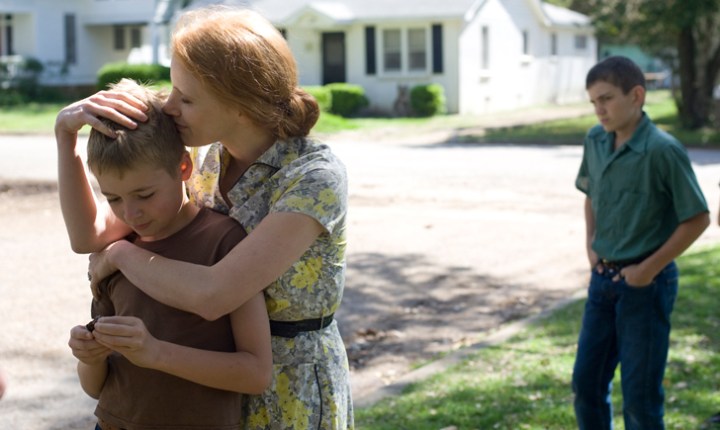 (Brad Pitt), an inventor, is having trouble getting ahead. He sees the world as cruel, rough, and competitive, and wants to make his sons into tough fighters who survive against all odds. The mother (Jessica Chastain) is deeply religious, a spiritual, charitable and nurturing protector. And the eldest son, Jack, (Hunter McCracken) takes it all in, but since he’s a kid, it all gets messed up in his head. He decides his father hates him and wants him dead, while he’s sexually excited by his beautiful mother – with all the guilt and shame that entails. Oedipus, anyone?
(Brad Pitt), an inventor, is having trouble getting ahead. He sees the world as cruel, rough, and competitive, and wants to make his sons into tough fighters who survive against all odds. The mother (Jessica Chastain) is deeply religious, a spiritual, charitable and nurturing protector. And the eldest son, Jack, (Hunter McCracken) takes it all in, but since he’s a kid, it all gets messed up in his head. He decides his father hates him and wants him dead, while he’s sexually excited by his beautiful mother – with all the guilt and shame that entails. Oedipus, anyone?
At the very beginning of the movie, we discover that one of the three sons has died. So the rest of the film shows us the memories, whispered thoughts and fantasies of all the other characters thinking back from the present to earlier times.
died. So the rest of the film shows us the memories, whispered thoughts and fantasies of all the other characters thinking back from the present to earlier times.
The story seems mainly to be told through Jack’s eyes, but the voices and thoughts of other characters weave in and out, too. When he wants to remember his now dead brother — whose faintly glowing soul appears at the start of every section of the movie — he thinks back to the very beginning – I mean the very, very beginning. At this point, the movie goes off on an unusual, but pleasant detour, back to the creation of the earth, with volcanoes, lava, ice, and water everywhere. Spiro gyra swim in the primordial ooze, and gradually cells separate, merge and evolve. It looks like an old NFB or Birth-Of-An-Island clip, or a grade 8 film strip. Only so much better.
 All to the sounds of Smetana and Mahler. Water crashes down over cliffs, and cute, fuzzy dinosaurs appear until they’re all wiped out by an asteroid. And then a baby – one of the brothers — is born.
All to the sounds of Smetana and Mahler. Water crashes down over cliffs, and cute, fuzzy dinosaurs appear until they’re all wiped out by an asteroid. And then a baby – one of the brothers — is born.
Aside from that — and a mega-FAIL yucky beach montage toward the end — the movie is mainly about a few years in the young family’s life as the kids grow up alongside a sapling in their yard – the tree of life – that turns into a huge, twisted and towering tree by the end. The very long memory scenes are book-ended by the eldest son looking back from the present day.
Is it a good movie? I thought it was great! But it’s an art film drama – don’t go if you’re looking for a mainstream conventional Brad Pitt love story. There’s not much dialogue, and the storytelling is a bit more subtle than formulaic dramas. But it’s not a low-budget run-off either; it’s a sumptuous, beautiful, and moving story of the confused memories of one boy’s childhood in Texas.
A totally different type of movie, but also experimental is a documentary about the indie movie scene in NY City in the late seventies and early eighties.
Dir: Celine Danhier
Before the real estate explosion, manhattan was a gritty, edgy place filled with crumbling tenements, lurking muggers, and random shootings.
Artists, writers and musicians fled from small towns and suburbs across the country to live in a more dangerous, more exciting world. They shared a feeling of nihilism, living as if the world was about to be obliterated by late-cold
-war atomic bombs blowing up across the planet. Large parts of the Lower East Side and Alphabet city were completely uninhabitable and bombed out, with broken windows, and missing doors. Nina, a Yugoslavian woman I used to know, lived on 3rd and B, and you had to walk over a giant piece of wood nailed halfway across the door of her closet-like apartment even to get inside. She was squatting there since no one anted to go near those buildings anyway.
Side and Alphabet city were completely uninhabitable and bombed out, with broken windows, and missing doors. Nina, a Yugoslavian woman I used to know, lived on 3rd and B, and you had to walk over a giant piece of wood nailed halfway across the door of her closet-like apartment even to get inside. She was squatting there since no one anted to go near those buildings anyway.
Now, of course, Manhattan is a giant shopping mall, with Times Square – formerly the place for runaways, hustlers, porn, prostitutes, pot dealers, and petty crime – now features tourist traps like the Disney princess store, and the M&Ms gift shop.
 Against the post-apocalyptic look of Dangerous Manhattan arose the No Wave movement, where filmmakers like Jim Jarmusch, Lizzie Borden, Susan Seidelman, and Richard Kern used their super-8 black and white cameras to create transgressive, sexually explicit, short films. Part of the coolness was to be poor, on the edge, anti-corporate, shocking, and completely divorced from conventional life. In order to appear as the absolute antithesis of slick and plastic hollywood movies, they went the opposite direction with unrehearsed, raw (if stilted) dialogue, rough editing, and scratchy sound. John Lurie says he had to hide his skill as a trained musician – you had to be unskilled and amateur to be accepted as “real”.
Against the post-apocalyptic look of Dangerous Manhattan arose the No Wave movement, where filmmakers like Jim Jarmusch, Lizzie Borden, Susan Seidelman, and Richard Kern used their super-8 black and white cameras to create transgressive, sexually explicit, short films. Part of the coolness was to be poor, on the edge, anti-corporate, shocking, and completely divorced from conventional life. In order to appear as the absolute antithesis of slick and plastic hollywood movies, they went the opposite direction with unrehearsed, raw (if stilted) dialogue, rough editing, and scratchy sound. John Lurie says he had to hide his skill as a trained musician – you had to be unskilled and amateur to be accepted as “real”.
A doctrine, known as the Cinema of Transgression, served as their guide to subvert… well, everything. The movies themselves were just as likely end up being shown at a punk club as in a movie theatre.
This documentary, Blank City, is a visual explosion of countless short clips of those films, alternated with present day interviews with some of the actors, musicians, artists and filmmakers of the period.
So you see Debbie Harry popping up almost everywhere, people dressed like RAF terrorists blowing up buildings, and lots of weird, semi-out-of-focus sex and violence. All with punk, new wave, early hip-hop and experimental music. This is a great movie that captures that short, explosive period of wide-open but underground filmmaking in the 80’s.
Tree of Life is now playing, and Blank City starts next Friday, July 15 at the Royal: check your local listings.
This is Daniel Garber at the Movies for CIUT 89.5 FM, and on my web site, CulturalMining.com.
July 1, 2011. Planes Trains and Automobiles… and Submarines! Movies reviewed: Submarine, Transformers: Dark of the Moon in 3D, The Trip
Hi, this is Daniel Garber at the Movies, for culturalmining.com and CIUT 89.5 FM, looking at high-brow and low-brow movies, indie, cult, foreign, festival, genre and mainstream movies, helping you see movies with good taste, and movies that taste good, and what the difference is.
This week I’m looking at a movie about a boy and his toys, whose best friend is a car/robot/god; another about a boy and his girlfriend who hang out on the wrong side of the tracks, and a third about a grown-up man talking with his best friend on a long car trip.
And I’m going to answer some invisible letters sent by hypothetical listeners.
Listener Dave from Scarborough asks: are their any good British movies anymore? There sure are, Dave.
Dir: Richard Aoyade
It’s the 1980’s, and Oliver Tate (Craig Roberts) lives with his hippie-ish parents in Swansea, Wales. His hobbies range from memorizing words from the dictionary, mimicking psychotic disorders, and monitoring his parents’ sex lives by checking the level of the dimmer switch in their bedroom.
He makes himself into an adult by smoking a pipe, wearing his dad’s bathrobe, listening to Serge Gainsbourg, and staring at the waves.
He’s alienated from his family, bullied at school, and has a crush on Jordana Bevis (Yasmin Paige), his cool and sophisticated classmate.
And he’s suspicious of the local psychic who moved in just down the hill. Is his mother leaving his depressed father and falling for that Ninja? Can he get Jordana to love him – and can he handle the real life problems all around him.
This is a great coming-of-age story, filmed against a backdrop of desolate railway lands, burning fires, and empty beaches. The acting is all-around great, and it’s almost a comedy, but not quite.
I liked it a lot, though the whole thing looked suspiciously like a movie version of the 1990’s British comic strip Modern Parents from VIZ magazine.
Dir: Michael Winterbottom
Steve Coogan is a great TV and movie actor, but times are tough, so he’s taken a job talking about the great restaurants of Northern England. All he has to do is drive around with his beautiful girlfriend, stay at country inns, and eat in and comment on fancy restaurants. (I wouldn’t say no to a job like that…) But, when she decides to move back to the States instead, he has to call his best friend Rob Brydon, also a comic actor, instead.
So the movie is actually an extended conversation between the two of them, in the car, in the hotels and in the restaurants, where the story’s in the trip and the destinations are an afterthought. So you get to hear them do submarine noises, and see who can do the best impression of Michael Caine. Steve Coogan makes pithy remarks about fancy food like “It has the consistency… of snot” and the two of them engage in singalongs to Abba tunes, lengthy discussions about Coleridge,
It sounds boring but it is just really, really funny. It’s actually the continuation of another movie (by the same director) called Tristram Shandy: a Cock and Bull story, about the same two guys trying to act in a film based on the unfilmable novel.
Here’s a letter from Michael from Berlin asks: Is this movie for real?
Naah. It’s not real, it’s a reality movie. It’s a condensed movie. The restaurants and hotels are actual places, the lines seem to be partly improvised and partly scripted. And Steve Coogan and Rob Brydon are their real names, but they play themselves as characters. The other actors play characters, like on “Curb Your Enthusiasm”. And the actors said at last year’s Toronto Film Festival, that they shot all the restaurant scenes, from start to finish, more than once.
My wish is that, someday, all reality shows — and all road trips — will be this funny.
 Transformers: Dark of the Moon
Transformers: Dark of the Moon
Directed by Michael Bay
Sam (Shia LaBoeuf) was a loudmouthed kid in a trailer who helped saved the world twice with his toy cars that transform themselves into giant alien robots. Now he has a medal from the President,a statuesque, model-girlfriend Carly (Rosie Huntington-Whitely) but he still can’t find a job.
Meanwhile, little do they know, but the world is at risk once again. You see, the planet where the Transformers all came from blew up many years ago after a war there, but a space ship, carrying “pillars” – basically devices with their whole planet in condensed form — crashed into the moon. So the whole space race was a conspiracy – the Soviets and the Americans both just wanted to get to that alien craft on the dark side of the moon. Uh huh…
Can Sam and his friends convince the CIA, and the US military that we are endangered again and the evil robots are trying to take over the planet, starting in Chicago? The first part of the movie is about the people in the movie and their fights, wishes and dreams. But the second part, the real reason to see it, is a non-stop battle, where the people stop talking except to say “Aim for his eyes!”, and the main point is watching the special effects. And boy, what amazing 3D special effects! Giant robots and war machines, hovering metallic space ships, the crashing skyscrapers, and army special-ops who can fly around like Rocky the Flying Squirrel.
If you look too deep, the movie’s kind of gross. It’s a simultaneous 2.5 hour ass-kiss of the US military and its operations, and a Glenn Beck-style uncovering of government conspiracies. Of the two women in the movie, one’s a beeyatch Hillary Clinton, the other a helpless girlfriend who needs to be rescued. But you don’t need to look at it closely. Just watch the cool, metallic transformations in mid-air, the amazing chase scenes, the flying, the sliding, the crushing, and most of all, the blowing up. BOOM! I want to see it again.
Rosemary from Toronto asks: How can you tell the good guys from the bad guys?
 Good question, Rosemary! The bad guys, the Decepticons, have red eyes, while the good guys, the Autobots, have blue ones. The bad guys are all evil liars, and either vainglorious megalomaniacs, or obsequious toadies. The Autobots only turn themselves into manly things like cars, while the evil Decepticons do disguise themselves as cars but also birds, gadgets, and accessories. They also talk like monsters, they drool, and they turn themselves into creatures with tentacles or moray eel mouths — sure signs of evil.
Good question, Rosemary! The bad guys, the Decepticons, have red eyes, while the good guys, the Autobots, have blue ones. The bad guys are all evil liars, and either vainglorious megalomaniacs, or obsequious toadies. The Autobots only turn themselves into manly things like cars, while the evil Decepticons do disguise themselves as cars but also birds, gadgets, and accessories. They also talk like monsters, they drool, and they turn themselves into creatures with tentacles or moray eel mouths — sure signs of evil.
Finally, Jean-Denis from Riviere-du-loup asks if there are any Canadian movies playing.
Well, if you’re in Toronto, you can catch an Open Roof screening of Bruce Mcdonald’s Trigger, starring Tracy Wright next Thursday night, along with the band Billie Burke.
Go to openrooffilms.com .
Submarine is now playing, Transformers: Dark of the Moon in 3D just opened, and The Trip starts today: check your local listings. Also opening this weekend in Toronto is the enjoyable French comic love story Le nom des gens.
and The Trip starts today: check your local listings. Also opening this weekend in Toronto is the enjoyable French comic love story Le nom des gens.
This is Daniel Garber at the Movies for CIUT 89.5 FM, and on my web site, Cultural Mining . com.


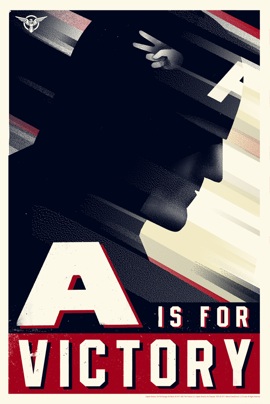
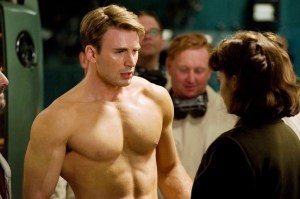
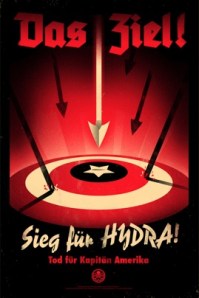
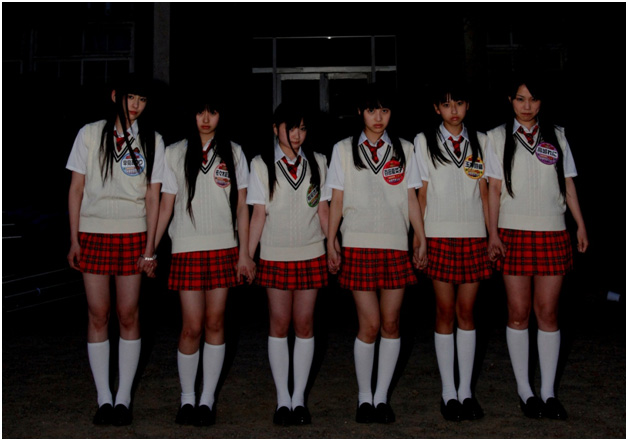



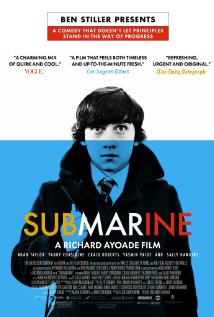

1 comment